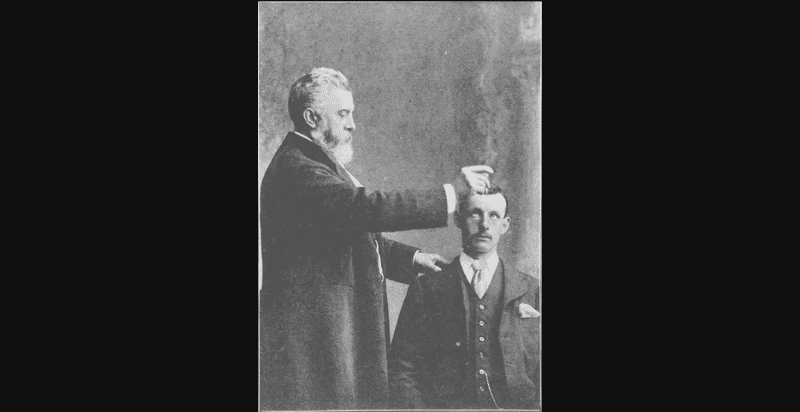James Braid was a Scottish surgeon and a pioneer in the field of hypnotism. He is credited with coining the term “hypnotism” and developing the technique of hypnotic induction, which is still used in modern hypnotherapy. Braid’s work in the field of hypnotism was groundbreaking and he helped to establish it as a legitimate therapeutic tool.
Born in 1795 in Fife, Scotland, Braid initially trained as a surgeon and ophthalmologist. However, he became interested in mesmerism, a popular form of hypnotism at the time.
Braid was initially skeptical of mesmerism but became convinced of its potential therapeutic benefits after witnessing a demonstration by French mesmerist Charles Lafontaine. Braid went on to develop his own techniques of hypnotic induction and began using hypnotism in his medical practice.
Early Life and Education
James Braid was born in Ryelaw House, Fife, Scotland, on June 19, 1795. He was the third son of James Braid and Anne Suttie. His father was a farmer, and James Braid followed in his footsteps for a time.
However, he soon became interested in medicine and decided to pursue a career as a doctor. He studied at the University of Edinburgh and graduated with a degree in medicine in 1815.
After completing his studies, Braid worked as a surgeon in the Royal Navy for several years. During this time, he gained valuable experience and honed his skills as a physician.
He eventually left the navy and returned to Scotland, where he set up a medical practice in the town of Dumfries. He quickly gained a reputation as a skilled and compassionate doctor, and his practice flourished.
Career as a Surgeon
James Braid began his medical career as an apprentice to his father, who was a surgeon in Scotland. He later studied medicine at the University of Edinburgh and became a member of the Royal College of Surgeons in 1815. Braid quickly established himself as a skilled surgeon and was well-respected by his colleagues and patients.
Throughout his career, Braid performed a variety of surgical procedures, including amputations, cataract surgeries, and the removal of tumors. He was known for his steady hand and his ability to perform complex surgeries with precision and care.
Despite his success as a surgeon, Braid became increasingly interested in the field of mesmerism, which eventually led him to abandon his surgical practice altogether. Learn more about Franz Anton Mesmer and mesmerism.
However, his background as a surgeon undoubtedly played a role in his later work with hypnotism, as he was able to approach the subject with a scientific and analytical mindset.
Overall, Braid’s career as a surgeon was a testament to his skill and dedication to the medical profession. While he ultimately moved on to other pursuits, his contributions to the field of surgery should not be overlooked.
Hypnotism and Hypnotherapy
James Braid was a Scottish physician and surgeon who is credited with developing the modern understanding of hypnosis. He believed that hypnosis was a state of mind that could be induced by suggestion and that it could be used to treat a variety of physical and mental conditions. In this section, we will explore Braid’s definition of hypnosis and his techniques of hypnosis.
Braid’s Definition of Hypnosis
Braid defined hypnosis as a “nervous sleep” that was induced by suggestion. He believed that hypnosis was a natural state of mind that could be induced in anyone, and that it was characterized by a heightened state of suggestibility. Braid saw hypnosis as a way to access the unconscious mind and to bring about positive changes in behavior and thought patterns.
Braid’s Techniques of Hypnosis
Braid developed several techniques for inducing hypnosis, including the “eye-fixation” technique, which involved asking the subject to stare at a fixed point while the hypnotist made suggestions. He also used the “bilateral stimulation” technique, which involved stimulating both sides of the body to induce relaxation and trance-like states.
Another technique that Braid used was the “progressive relaxation” technique, which involved systematically relaxing each muscle group in the body to induce a state of deep relaxation. Braid also believed in the power of suggestion and used a variety of verbal and nonverbal cues to induce hypnotic states in his patients.
Overall, Braid’s techniques of hypnosis were based on the idea that the mind and body are interconnected and that hypnosis could be used to bring about positive changes in both.
While some of his techniques may seem outdated by today’s standards, Braid’s contributions to the field of hypnotherapy have had a lasting impact on the way we understand and use hypnosis today.
Later Life and Legacy
After retiring from his medical practice, James Braid continued to write and lecture on the subject of hypnosis. He was also a founding member of the British Society of Psychological Medicine, which was later renamed the Royal Society of Medicine. Braid’s contributions to the field of hypnosis were significant, and his work helped to establish the practice as a legitimate form of medical treatment.
Braid’s legacy continues to be felt in the field of hypnosis today. His techniques and theories have been refined and expanded upon over the years, but his fundamental contributions remain relevant. In particular, Braid’s emphasis on the power of suggestion and the importance of establishing rapport with patients has been influential in shaping modern hypnotherapy practices.
Video: The Science of Hypnosis
James Braid Summary
Today, Braid is widely regarded as one of the pioneers of hypnosis, and his contributions to the field have been recognized with numerous awards and honors.
His legacy continues to inspire and inform those who practice hypnotherapy today, and his work has helped to establish hypnosis as a valuable tool for treating a wide range of medical and psychological conditions.
James Braid is considered one of the pioneers of the field of hypnosis, if you would like to learn about other historical figures, be sure to read about the Grandfathers of Hypnosis.
Featured image credit: James Coates (1843-1933), Public domain, via Wikimedia Commons
